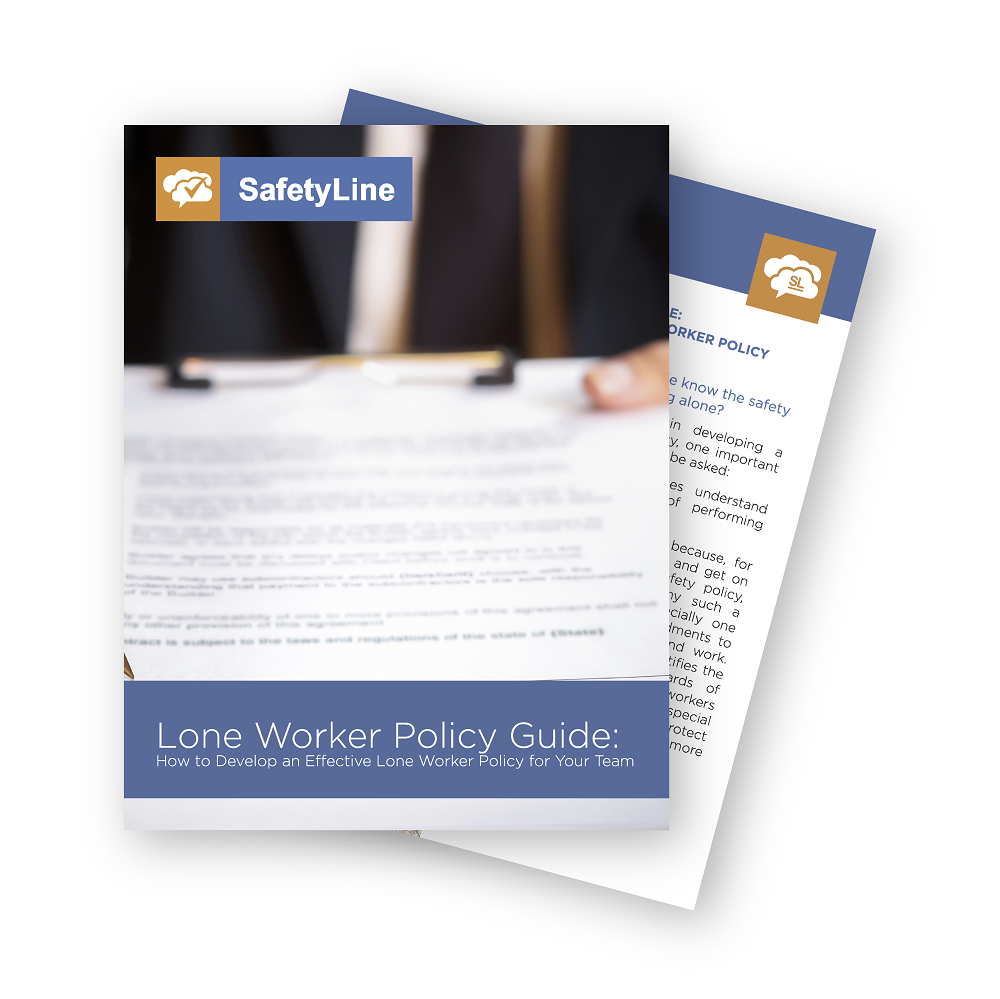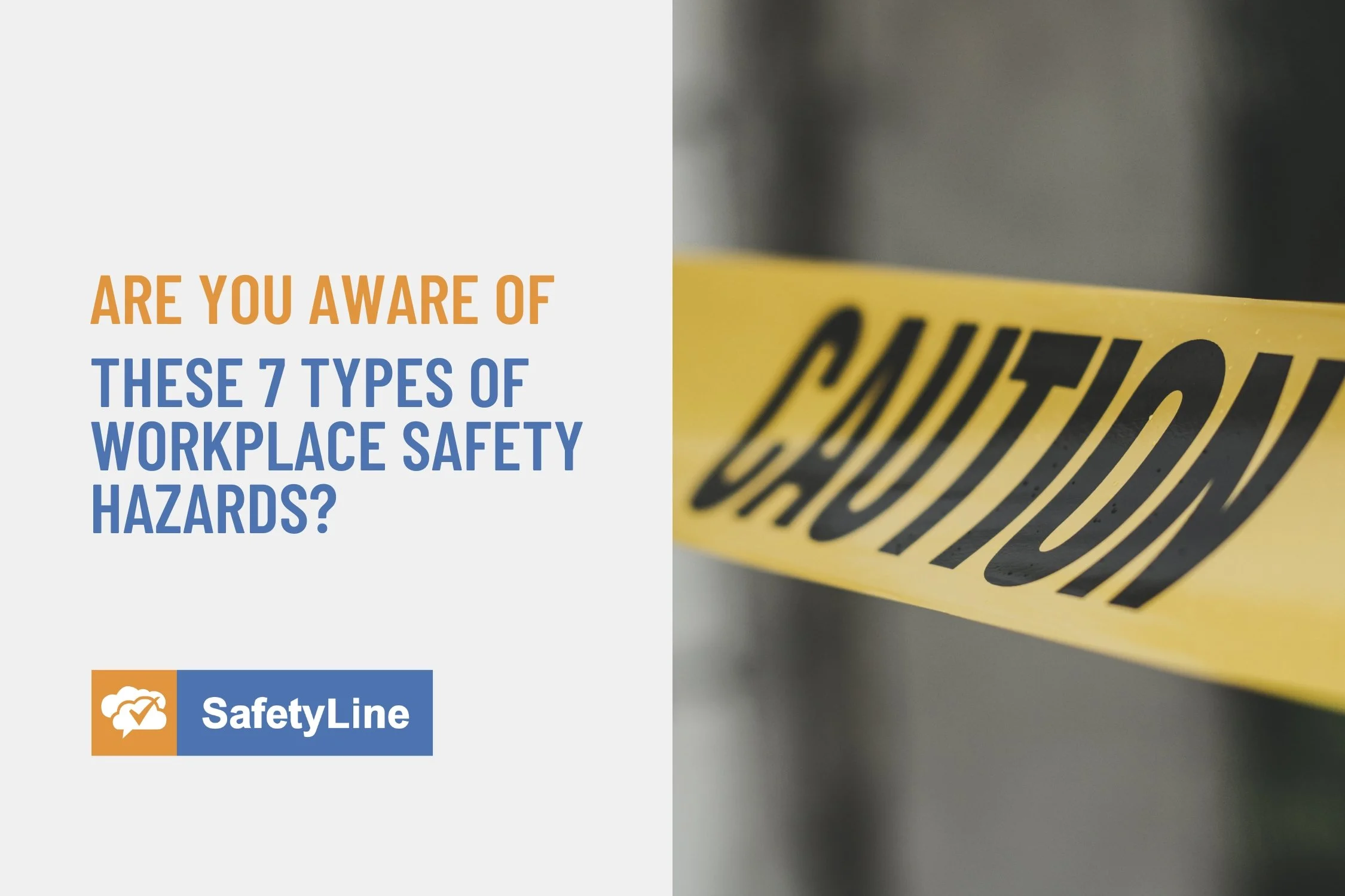Featured Resources
Lone Worker Policy Guide and Template
A lone worker policy is an effective way to ensure that your lone workers are well-educated on your company’s work-alone rules and have extensive knowledge of all workplace hazards that could be encountered on the job.
Hazard Assessment Guide
In the process of doing a hazard assessment for your workplace, it is almost a certainty you’ll learn information about the operational aspects of your organization you were unaware of before the assessment.
View eBook
Develop a Free Lone Worker Program for Small Teams
Developing a free lone worker check-in system is a simple process for small teams that any organization can implement.
View eBook
SafetyLine Blog Categories
General Safety | Lone Worker Safety | SafetyLine News and Updates | SafetyLine Product Updates | Compliance, Policy, and Regulations | Downloadable Resources |
Keep Safety Simple: The Three Rs of Workplace Safety Monitoring
If you’ve done your homework, you know that there are a lot of considerations when it comes to safety monitoring in the workplace. You have to think about your employees, your equipment, your workplace, and the list goes on. In this article we’ll look at how you can keep safety simple, with the Three R’s of Workplace Safety Monitoring: Report, Respond, and Review.
Traditional vs Automated Work Alone Solutions
Many organizations implement safety monitoring systems for employees working alone. Unfortunately, the vast majority of systems may not be compliant with legislation and can be a wasteful drain on resources. In this article, we look at the differences between traditional and automated work-alone monitoring solutions.
Are You Aware of These 7 Types of Workplace Safety Hazards?
Workplace safety hazards exist in every environment, but how do you know which ones have the most potential to harm workers? By identifying hazards at your workplace, you will be better prepared to control or eliminate them and prevent accidents, injuries, property damage, and downtime.
The Hidden Pitfalls of Relying on the “Buddy System” for Safety
Whether it’s walking home after dark or working with the public, having someone you trust nearby can help keep you safe. Unfortunately, this can also lead to an overreliance on the buddy system when people are creating emergency response procedures. Here are some of the common pitfalls that people fall into when they rely too heavily on the buddy system in the workplace.
Who's Protecting the Protectors? (Part 1 of 3)
All security employers have the primary legal duty to protect the health and safety of their workers. However, it is a legal burden that is shared. Unfortunately, too many employers address this legal, ethical and moral responsibility only after an incident has occurred that caused harm or injury to a worker or the employer has been cited by WorkSafe BC for noncompliance with OHS Law.
5 Activities to Improve Your Next Safety Training
Studies have shown that training in the workplace has a positive impact on the safety practices of workers. That’s why it’s important that your workers are able to get the most out of your next safety meeting. Read on for 5 activities that can increase engagement during your next training.
How to Get “Safety First” Shoes for the Job
Nearly 25% of workplace harm is caused by accidents related to poor footwear, so making the right choice with shoes can save you a lot of grief. Here are some friendly suggestions for when it's time to purchase safety first shoes for work.
Responding to Emergencies in the Workplace
When it comes time to respond during an emergency, knowing what steps to take can be crucial. If an emergency happens in the workplace, it could be your responsibility to provide help. In this article, we’ll look at some of the ways you can help your employees during an emergency.
How to Prepare Your Vehicle for Winter
As you prepare for winter weather, it’s important to also get your vehicle ready. Making sure that your vehicle is ready for the cold can be a critical safety issue. In this article, we look at how you can prepare your vehicle for winter driving.
Working Alone Around the World
Working alone creates a lot of safety concerns that don’t exist when there are multiple employees present. Unfortunately, work alone safety is something that isn’t always well defined or even well understood. Because the procedures for protecting lone workers are still evolving, we need to look around the world to see how the protection of lone workers is evolving.
5 Ways to Manage Workplace Stress and Job Demands
There are many ways to manage stress in the workplace, ranging from quick exercises to more intensive interventions involving many employees. In this list we’ll look at some of the simplest ways that you can manage your stress.
Common Emergency Response Plan Pitfalls
In the event of an actual emergency, overly complex and untested plans can be deficient and ineffective, endangering the lives of employees and potentially contributing to an escalating emergency situation. Below is a list of commonly exhibited emergency response plan pitfalls that are associated with inadequate responses.
Psychological Safety and the Home Care Nurse
There are many factors that effect psychological safety in the workplace. A simple breakdown in communication can lead to increasing tension and stress in a working relationship. Everyone has a role to play to ensure a psychologically safe working environment. Read on to learn strategies for you from a practical example, and to learn about the impact and obligations for your employer.
6 Tips for Working Safe in Cold Weather
Working in cold conditions isn’t just uncomfortable, it can be dangerous. Frostbite, numbness, dehydration and hypothermia are real concerns from chilly outdoor weather. If you're working outdoors this winter, be aware of the dangers and stay safe. In this article, we're looking at 6 tips for staying safe in the cold.
How to Get the Most Out of Your Next Safety Training
You’re tasked with hosting safety training, and you know that you have a lot to consider. You have limited time and resources, and you’re not sure how many attendees to expect. Do you have a plan? The best way to make sure that your training is effective is to plan a structured meeting. Here are some steps to creating a successful meeting from start to finish.
5 Winter Weather Battery Tips
When it comes to planning for winter, we often overlook our electronic devices. As temperatures fall, the capacity of batteries decreases. If you're working outdoors, you need a plan to keep your devices running. If you unwrapped new technology these holidays, these tips will make sure that the winter weather doesn’t leave you out in the cold.
Stricter Work Alone Regulations for Saskatchewan
It was announced this past Saturday that the Saskatchewan government is changing labour regulations for better protection of lone workers in retail and gas stores. The regulation calls for a check-in system and panic button requirements for all employees working alone in late-night retail establishments.
The Top 10 Workplace Safety Violations
Skimming the news, you’ll see regular reports of OSHA citations for all types of safety violations. To help educate employers about these common challenges so they can take steps to prevent injuries from occurring, OSHA publishes the top 10 most frequently cited standards in order to help organizations fix theses hazards, and stop from any harm taking place at all.
Can Employees Working in a Group Be Lone Workers?
It’s important for employers to have a plan in place that covers not just lone workers, but groups of employees. In this post, we’ll look at what employers can do to create safety policies that protect both lone workers and larger groups of employees.
Workplace Hazards Series: Physical Hazards
Of all the hazards in your workplace, physical hazards might the least obvious. Despite their name, physical hazards aren’t always something that you can see or touch. In this installment of our “Workplace Hazards” series, we’ll take a look at how you can identify and prepare for physical hazards.























